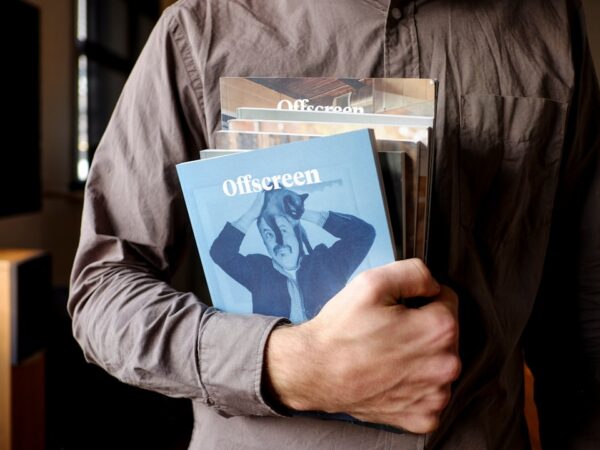
Top Film Adaptations: Best Books to Watch
Film adaptation is the process of transforming a written work, such as a novel or a play, into a film. It is a complex and challenging task that requires careful consideration of the source material and the unique elements of the cinematic medium. The appeal of book-to-film adaptations lies in the opportunity to bring beloved stories to life on the big screen, allowing audiences to experience them in a new and visually captivating way.
Key Takeaways
- Film adaptation is an art that requires balancing the original source material with the demands of the medium.
- Adapting books to film presents challenges such as condensing complex plots and characters, and satisfying fans of the source material.
- Timeless novels like “To Kill a Mockingbird” and “The Great Gatsby” have inspired iconic films that continue to resonate with audiences.
- Contemporary books like “The Hunger Games” and “Gone Girl” have become blockbuster hits thanks to their compelling stories and characters.
- Underrated books like “The Perks of Being a Wallflower” and “The Secret Life of Bees” have produced great films that deserve more recognition.
From Page to Screen: The Challenges of Adapting Books
Adapting a book into a movie is not without its difficulties. One of the main challenges is condensing a lengthy narrative into a two-hour film. This often requires cutting out subplots, characters, and even entire storylines, which can be disappointing for fans of the original work. Additionally, books often rely heavily on internal monologues and descriptions, which can be difficult to translate into visual storytelling.
Another challenge is staying true to the source material while also making necessary changes for the cinematic medium. Filmmakers must strike a balance between honoring the original work and making it accessible and engaging for a wider audience. This can be particularly challenging when adapting complex or experimental novels.
There have been both successful and unsuccessful adaptations throughout film history. Some examples of successful adaptations include “The Lord of the Rings” trilogy, which brought J.R.R. Tolkien’s epic fantasy world to life with stunning visuals and compelling performances. On the other hand, there have been adaptations that failed to capture the essence of the source material, such as “The Golden Compass,” which received mixed reviews and disappointed fans of Philip Pullman’s beloved novel.
The Classics: Timeless Novels That Inspired Iconic Films
Many classic novels have been successfully adapted into films, standing the test of time and becoming beloved cinematic experiences in their own right. These adaptations often capture the essence of the original work and bring the characters and stories to life in a visually stunning way.
One example of a classic novel that has been adapted into a successful film is “Pride and Prejudice” by Jane Austen. The 2005 film adaptation, directed by Joe Wright and starring Keira Knightley, received critical acclaim for its faithful portrayal of the beloved characters and its lush cinematography. The film brought Austen’s witty social commentary and timeless love story to a new generation of viewers.
The enduring appeal of these classic stories lies in their universal themes and relatable characters. They continue to resonate with audiences across generations, and their film adaptations allow viewers to experience these stories in a new and immersive way.
The New Classics: Contemporary Books That Became Blockbuster Hits
| Book Title | Author | Publication Year | Number of Copies Sold | Movie Adaptation |
|---|---|---|---|---|
| The Hunger Games | Suzanne Collins | 2008 | 100 million | Yes |
| The Girl with the Dragon Tattoo | Stieg Larsson | 2005 | 80 million | Yes |
| Gone Girl | Gillian Flynn | 2012 | 20 million | Yes |
| The Fault in Our Stars | John Green | 2012 | 23 million | Yes |
| The Help | Kathryn Stockett | 2009 | 10 million | Yes |
In recent years, there has been a surge in the number of contemporary books being adapted into successful films. These adaptations have had a significant impact on both the literary and film industries, introducing new audiences to the original works and generating renewed interest in reading.
One example of a contemporary book that became a blockbuster hit is “The Hunger Games” by Suzanne Collins. The dystopian young adult novel was adapted into a highly successful film franchise, starring Jennifer Lawrence as the fierce protagonist, Katniss Everdeen. The films not only captured the intense action and emotional depth of the books but also sparked important conversations about social inequality and political corruption.
These adaptations have not only brought attention to the original works but have also opened doors for other contemporary authors to have their books adapted into films. They have shown that there is an appetite for compelling stories across various genres, and that audiences are eager to see their favorite books come to life on the big screen.
Hidden Gems: Underrated Books That Produced Great Films
While many book-to-film adaptations are based on well-known novels, there are also hidden gems that have produced great films despite being lesser-known works. These adaptations often introduce audiences to new and unique stories that they may not have discovered otherwise.
One example of a lesser-known book that produced a great film is “Room” by Emma Donoghue. The novel tells the story of a young boy and his mother who are held captive in a small room. The film adaptation, directed by Lenny Abrahamson and starring Brie Larson, received critical acclaim for its powerful performances and emotional storytelling. The film brought attention to the original novel and shed light on the important issue of captivity and resilience.
Adapting lesser-known works can be a risk for filmmakers, as they may not have the built-in fan base or recognition of more popular novels. However, these adaptations have the potential to surprise and captivate audiences with their unique stories and fresh perspectives.
The Controversial Ones: Books That Stirred Up Debate in Their Adaptations
Some book-to-film adaptations have stirred up controversy and divided audiences due to changes made to the source material or controversial subject matter. These adaptations often spark passionate debates about artistic integrity, faithfulness to the original work, and the responsibility of filmmakers to handle sensitive topics.
One example of a controversial adaptation is “Lolita” by Vladimir Nabokov. The novel, which explores the taboo subject of a middle-aged man’s obsession with a young girl, has been adapted into two films, one in 1962 and another in 1997. Both adaptations faced criticism for their portrayal of the relationship between the two main characters and were accused of glamorizing pedophilia.
These controversial adaptations highlight the challenges that filmmakers face when adapting sensitive or controversial material. They also raise important questions about the responsibility of filmmakers to handle such topics with care and respect.
Literary Fiction: Award-Winning Novels That Made for Great Cinema
Many award-winning novels have been successfully adapted into films, bringing critical acclaim to both the original works and the cinematic adaptations. These adaptations often capture the depth and complexity of the source material, and their success can be attributed to the talented filmmakers and actors involved.
One example of an award-winning novel that made for great cinema is “To Kill a Mockingbird” by Harper Lee. The Pulitzer Prize-winning novel was adapted into a film in 1962, starring Gregory Peck as the iconic Atticus Finch. The film received critical acclaim for its powerful performances, thought-provoking themes, and faithful adaptation of Lee’s beloved novel.
These adaptations not only bring attention to the original works but also showcase the talent and creativity of filmmakers in translating complex literary fiction into compelling cinematic experiences.
Genre Fiction: Popular Books That Transformed into Exciting Films
Genre fiction, such as science fiction, fantasy, and mystery, has also been successfully adapted into exciting films that capture the imagination of audiences. These adaptations often bring fantastical worlds and thrilling adventures to life on the big screen, offering viewers an escape from reality.
One example of a popular genre fiction book that transformed into an exciting film is “Harry Potter and the Philosopher’s Stone” by J.K. Rowling. The first book in the Harry Potter series was adapted into a highly successful film franchise, captivating audiences with its magical world and endearing characters. The films not only brought Rowling’s beloved characters to life but also introduced a new generation of readers to the joys of reading.
These adaptations have had a significant impact on both the literary and film industries, inspiring a new wave of genre fiction books and films and creating a dedicated fan base that continues to grow.
Memoirs and Biographies: Real-Life Stories That Inspired Powerful Movies
Memoirs and biographies have provided rich material for powerful and inspiring films based on real-life stories. These adaptations often shed light on important historical events or personal struggles, offering viewers a glimpse into the lives of extraordinary individuals.
One example of a memoir that inspired a powerful film is “The Diary of Anne Frank.” The diary, written by Anne Frank while she and her family were in hiding during the Holocaust, was adapted into a film in 1959. The film received critical acclaim for its sensitive portrayal of Anne’s experiences and its exploration of the human spirit in the face of adversity.
These adaptations not only bring attention to the original memoirs and biographies but also serve as important reminders of the resilience and strength of the human spirit.
The Enduring Appeal of Book-to-Film Adaptations
In conclusion, book-to-film adaptations have a lasting appeal due to their ability to bring beloved stories to life on the big screen. While there are challenges in translating a book into a movie, successful adaptations can capture the essence of the source material and offer audiences a new and visually captivating experience.
From classic novels to contemporary books, hidden gems to controversial works, literary fiction to genre fiction, and memoirs to biographies, book-to-film adaptations have had a significant impact on both the literary and film industries. They introduce new audiences to original works, generate renewed interest in reading, spark important conversations, and showcase the talent and creativity of filmmakers.
The enduring appeal of these adaptations lies in their ability to transport viewers into different worlds, evoke powerful emotions, and offer a fresh perspective on familiar stories. Whether it’s revisiting a beloved classic or discovering a new and unique story, book-to-film adaptations continue to captivate audiences and leave a lasting impact on both industries.
FAQs
What are some of the best books that have been made into films?
Some of the best books that have been made into films include “The Godfather,” “To Kill a Mockingbird,” “The Shawshank Redemption,” “The Lord of the Rings,” “The Silence of the Lambs,” and “Gone with the Wind.”
What makes a book a good candidate for a film adaptation?
A book that has a strong plot, well-developed characters, and vivid descriptions is often a good candidate for a film adaptation. Additionally, books that have a large fan base or have won literary awards are often considered for film adaptations.
What are some challenges that filmmakers face when adapting a book into a film?
Filmmakers often face the challenge of condensing a lengthy book into a two-hour film while still maintaining the integrity of the story and characters. They also have to make decisions about which parts of the book to include and which to leave out, as well as how to visually represent the story and characters.
Are film adaptations always faithful to the original book?
No, film adaptations are not always faithful to the original book. Filmmakers often make changes to the story, characters, and plot in order to make the film more visually appealing or to appeal to a wider audience. However, some filmmakers strive to stay as faithful to the original book as possible.
What are some examples of film adaptations that were better than the original book?
Some examples of film adaptations that were considered better than the original book include “The Godfather,” “The Shawshank Redemption,” and “The Silence of the Lambs.” However, this is subjective and opinions may vary.


















